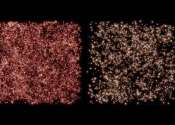Astronomers suggest more galaxies were formed in the early universe than previously thought
In a new study, a team of astronomers led by Haojing Yan at the University of Missouri used data from NASA's James Webb Space Telescope (JWST) Early Release Observations and discovered 87 galaxies that could be the earliest ...









